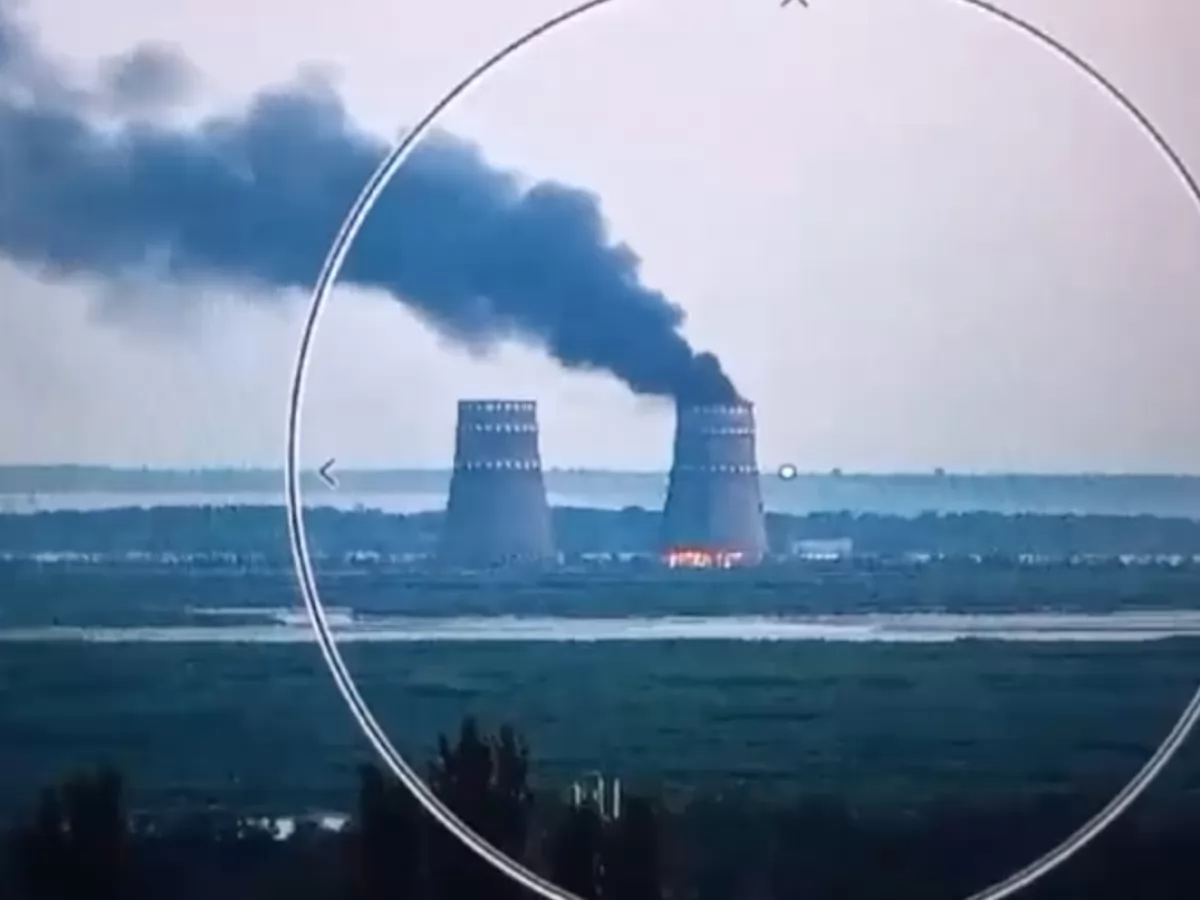Yesterday evening, the Nikopol district military administration reported that Russian military personnel set fire to a significant number of car tires on the territory of the Zaporizhzhia Nuclear Power Plant (ZNPP). This event has raised concerns about a possible provocation that could lead to serious consequences.
Causes of the Fire
According to “Energoatom,” the fire broke out at the ZNPP technical water supply facility, resulting in the burning of cooling tower No. 1. The incident could have been caused by either negligence or deliberate arson. It is important to note that the cooling tower is located just one kilometer from the reactor units, and a major fire at this facility could lead to an accident involving the release of radioactive substances. Currently, the radiation background remains within acceptable limits, which is somewhat reassuring but does not eliminate the threat.
Who is to Blame?
In turn, the Russian authorities are accusing the Armed Forces of Ukraine of the fire, claiming that the station was attacked by a Ukrainian drone. However, such claims have not been confirmed by international organizations.
Why does Russia need such accusations? To put pressure on Ukraine from international organizations. The Russian military has been storing its equipment and ammunition on the ZNPP premises since day one, violating all international norms and nuclear safety requirements. Therefore, they need provocative actions to worsen Ukraine’s reputation, under which their own violations will not provoke a strong reaction.
The fire was successfully extinguished the next morning. Air measurements did not show an increase in radiation levels, which is good news amidst the alarming events. It is known that some residents of Zaporizhzhia, Nikopol, and Marhanets, located nearby, refrained from going to work on the morning of August 12 until they were sure that no disaster had occurred. However, there was no panic among the population.
IAEA Reaction
The International Atomic Energy Agency (IAEA) did not take sides, stating only that it observed explosions and smoke on the station’s premises. Additionally, the IAEA reported a possible drone attack, but did not specify a particular responsible party.
The Russian authorities insist that the IAEA should name those responsible for the shelling and fire at the Zaporizhzhia Nuclear Power Plant. This incident once again underscores the danger of military activities on the premises of a nuclear power plant, which could become the epicenter of an ecological disaster if necessary measures are not taken to ensure its safety.
Meanwhile, the entire south of Ukraine, like the rest of the world, continues to “sit” at the mouth of this volcano, which could erupt at any moment due to the negligence and lack of professionalism in the operation of the Russian occupiers.


